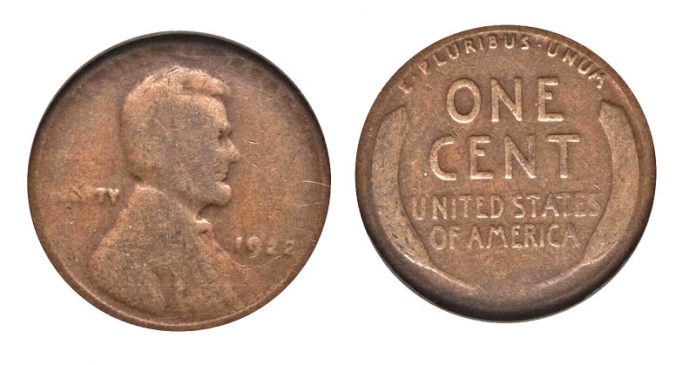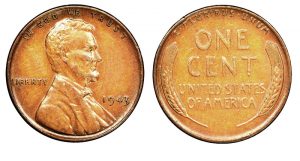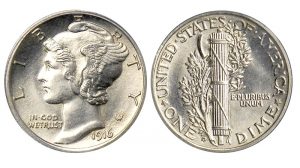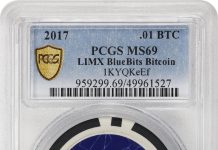
The Great Depression was hard on pocket change coin collecting. Many families were barely able to put food on the table. Collecting coins was an unheard-of luxury. By 1935, however, many people were able to broaden their horizons beyond the daily struggle to exist.
Collecting in the 1930s
In the 1930s, entrepreneurs began to develop special boards for collecting small coins, especially cent pieces. The idea was to find a coin with each date and mintmark to put in the open space on a board. It was not long before most collectors realized that certain spaces could be only filled with difficulty. A lot of looking was necessary to find the missing pieces. At first, because money was tight and wages for the common people were not all that high, most would-be collectors settled for the cent piece. Many of the collectors in the 1930s searched their pocket change for Indian Head cents, which had last been struck in 1909. Two dates were known to be rare and were sought after. The first was the 1877 cent, which is still in strong demand from modern-day collectors.
Indian Head Cents
By the mid-1930s, Indian Head cents dated prior to the late 1890s had mostly gone out of daily use. It was a rare collector that found an 1877 circulating in the marketplace.
The 1909 Indian Head cent in the strongest demand was the one struck at the San Francisco Mint, called the 1909–S in present-day terms. Only about 300,000 were made, meaning that it was difficult to find in everyday change. This 1909 cent was easier to find than the 1877, however.
Lincoln Cents
Indian Head cents were seldom seen in circulation by the early 1940s. Several Lincoln cent pieces have been sought after by collectors and sometimes the general public. The first of these is the 1909–S V.D.B. cent. Under one-half million such coins were made, making them increasingly difficult to find in circulation from t he 1930s forward. The V.D.B. initials, standing for the artist Victor David Brenner, were removed from the reverse in mid–1909, and cents of that year, without these initials, are worth considerably less. The second sought-after piece, 1922, has an interesting history. All 1922 cent coinage was made at Denver, but the dies were used too long on the coining press, and the mint-mark D sometimes wore down to nothing in the die. The result was a coin without a mintmark appearing to have been struck at Philadelphia. The cents could be found in the 1940s, but only on rare occasions after that.

PHOTO COURTESY HERITAGE AUCTIONS HA.COM
A cent well known to the public since the late 1940s, that draws newspaper stories when found, is a unique cent from 1943. In that year, the composition of the cent had been changed from bronze to zinc-coated steel, but a handful of bronze blanks somehow found their way into the coining press. These were discovered by sharp-eyed collectors not long after. An occasional piece was discovered in the 1950s and 1960. Nearly all the copper cents, as they are called by collectors, were struck at the Philadelphia Mint. In the 1950s, in particular, it was common for collectors to search thousands of coins looking for a 1943 copper cent.
The last cent sought after by collectors and the general public was the 1955 doubled die cent. The obverse is heavily doubled, and the problem is visible to the naked eye. Most were released in New England as change in cigarette packages, which caused a run on vending machines that sold such items. These special coins were rarely found in circulation after about 1960.
Copper-Nickel Five Cent Pieces
During the 1930s, there were only three copper-nickel five-cent pieces (called “nickels” by just about everyone) that were avidly sought after by the collecting public. The first, which was of little value and found relatively easily, was the 1913 Buffalo nickel with the denomination on the reverse struck on raised ground. Later that year, the value was recessed, meaning that it would not wear off as quickly. The Raised Ground coins were popular because collectors enjoyed showing their friends a Buffalo nickel that was different from those in circulation in the 1930s. The Buffalo nickels were last struck in 1938, but the odd reverse continued to interest collector and non-collector alike for many years.
The second piece, which even had newspaper publicity, was the famous 1937–D nickel in which the Buffalo had only three legs instead of the usual four. An overly zealous mint workman had ground down the reverse die to the point of eliminating a leg. These error coins could still be found in circulation during the 1950s, although in ever-decreasing numbers as collectors removed them from daily use.
The last such piece was the 1950–D nickel struck at Denver. With a mintage of fewer than three million, many collectors and dealers made every effort to obtain as many of these coins as possible. There are stories of collectors visiting banks throughout the West and Midwest to corner the market. A large number were obtained by hoarders and dealers, but many also escaped into daily use.
Collecting Dimes
A dime in the 1930s had real purchasing power, so this denomination was not as widely collected for some years. Barber dimes, struck from 1892 to 1916, were not highly desirable, but Mercury dimes were popular. The most sought-after dime of this type was the 1916–D, a Mercury dime struck at Denver in 1916. Mercury dimes struck at San Francisco and Philadelphia that year are relatively common.

PHOTO COURTESY STACK’S/BOWERS
With just over a quarter of a million Mercury dimes struck at Denver in 1916, this was not an easy coin to find in the 1930s and later. Even when found, however, the piece was likely to be well worn, with the date and mintmark often barely visible.
The Late 1930s
By the late 1930s, it became more common to see people laying aside quarter dollars with the Standing Liberty design, struck from 1916 to 1930. Before 1925, however, the date was in too high a relief and wore down to the point that it could not be read. Astute collectors realized that Standing Liberty quarters dated before 1925 would someday be worth a reasonable premium and laid these coins aside.
The most sought-after date was 1916, of which only 52,000 were struck in late December 1916. Even in Fine–12, a circulated grade, the value is roughly $5,000.
Dateless Standing Liberty quarters continued to circulate well into the 1950s, as no one wanted them. In the 1960s, these dateless pieces were among those melted down for their silver content.
To subscribe to COINage magazine click here. Story by R.W. Julian.











